Pepper cultivation is a multi-stage work, the success of which depends on compliance with all cultivation rules. Before planting pepper on seedlings, a preliminary seed preparation, first of all, it is important to properly soak the seeds if necessary. It is desirable to combine this procedure with the disinfection and saturation of raw materials with microelements using potassium permanganate, protectants, stimulants, wood ash, hydrogen peroxide and other effective means.
There are ways to increase pepper viability by hardening the seeds and accelerating their germination. All these measures allow you to get strong shoots, which will decisively affect the quality and volume of the crop.
Content
Do I need to soak pepper seeds before planting?
There is no consensus among vegetable growers on this issue:
- This procedure is definitely not needed for pelleted and inlaid seeds. Under industrial conditions, they are enveloped in a special mixture containing fungicides, often insecticides, as well as the nutrient supply necessary for seed germination and seedling health. When drazhirovaniya layer of glaze on the seed material is thick, and when inlaid is thin. Such seeds have excellent germination (95-100%), if not stored for a long time. They should be sown dry, because when soaked, the protective shell is washed off.
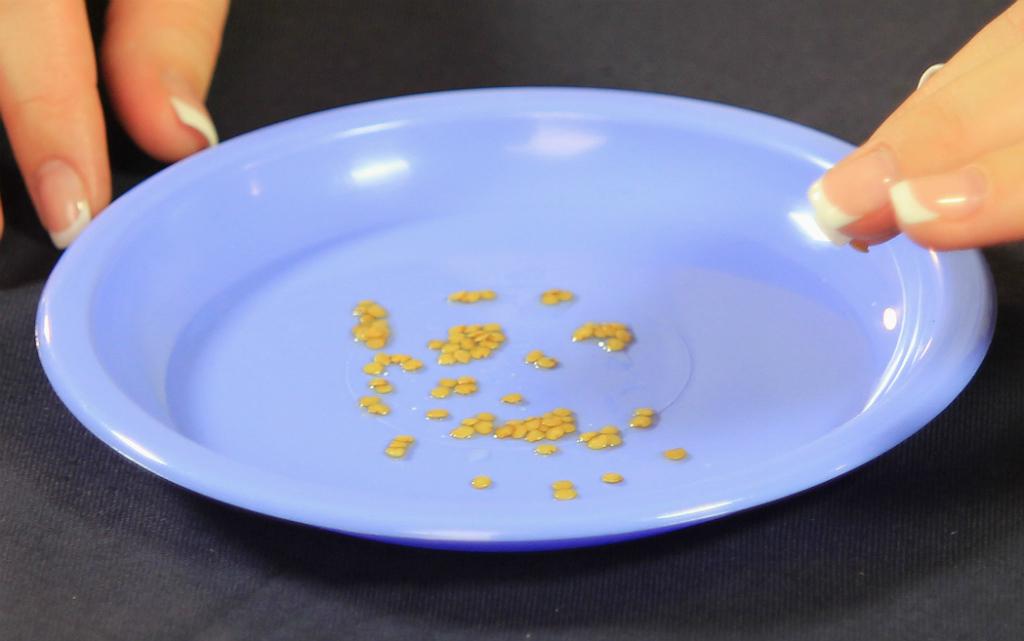
It should dissolve gradually during watering the soil. - Soaking ordinary seeds can accelerate the emergence of seedlings, which is especially important for regions with a short climatic summer. In warm regions, where even late-ripening varieties manage to ripen well before the onset of frost, you can do without this manipulation. Although experienced summer residents are advised not to neglect it for such reasons:
- seedlings appear 1-1.5 weeks earlier;
- seeds with strong sprouts can be selected for 100% suitable for sowing;
- additional operations help strengthen immunity, increase the resistance of the culture to diseases and pests.
Seed preparation algorithm before planting
Preparation includes the selection of seed, disinfection, saturation in the nutrient solution with trace elements, soaking and (if necessary) hardening.
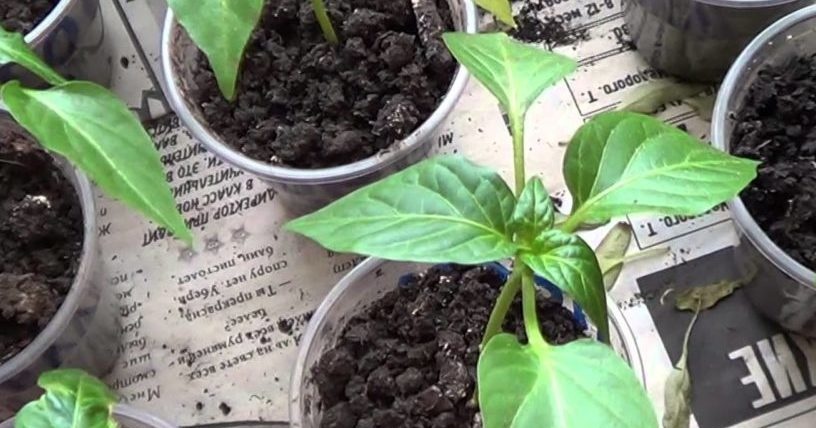 You may be interested in:
You may be interested in:Calibration
Before all procedures, the seeds must undergo a careful selection. First you need a visual assessment: pour the seed onto a piece of paper and select medium-sized specimens (you can get rid of the rest). Then they must be placed in saline (1 tsp. To 1 glass of water) for 5-7 minutes. All emerged seeds can be disposed of, and those settled on the bottom should be washed with clean water and dried on paper.
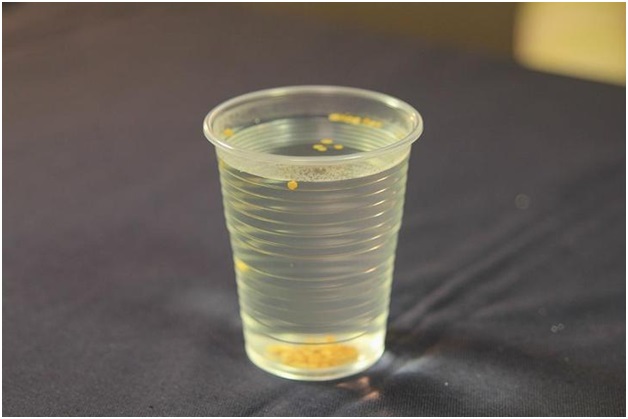
Some gardeners deny the usefulness of this method, claiming that even suitable seeds come up. By the way, the moisture content of seeds from large producers (especially imported) can be reduced to an acceptable level for long-term storage. Despite the good quality, they will also pop up.They may not be tested for suitability.
Disinfection
The most popular remedy for this procedure is potassium permanganate (potassium permanganate). You need to make a weak solution (1-2%), immerse the seeds in it for 15-20 minutes, then remove them, rinse well and dry.

Another effective remedy is Fitosporin-M. This is a modern microbiological drug that inhibits the reproduction of various pathogens of fungal and bacterial diseases. It is made in the form of powder, paste, liquid. It should be used in accordance with the attached instructions. The same applies to the Vitaros complex seed dresser (sold in the form of a water-suspension concentrate) and others.
Stimulation of growth and micronutrient saturation
The soaking procedure in the nutrient solution should also be carried out immediately before sowing. It has long been tested by gardeners and a very effective way - soaking the seed in a solution of wood ash, which contains more than 3 dozens of trace elements useful to plants.
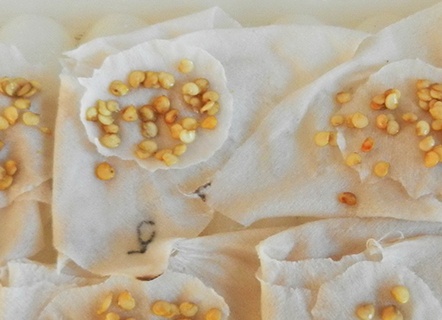
The solution is prepared in advance: put in a 1 liter jar of 2 tbsp. l ash, fill it with water and insist for a day, occasionally shaking. Then the infusion is drained without sediment, the seeds are immersed in it for 4-5 hours, after which it is removed and dried on paper.
If microfertilizers are purchased for these purposes, then they should be dissolved in warm (+ 40 ° C) water. The temperature of the solution before immersing seeds in it should be 20-22 ° C.
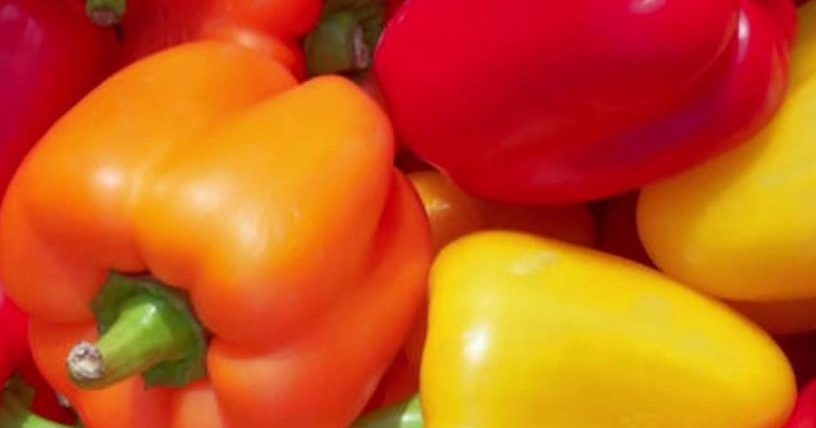 You may be interested in:
You may be interested in:Soaking
This operation accelerates the germination of pepper seeds, softening their shell and awakening vitality. Seeds must be evenly distributed in the container over the surface of a moistened cloth or cotton and covered with the same material to better maintain moisture. Then you should moisten everything with settled or “living” melt water.
It is necessary to control the presence of moisture in the container, periodically wetting the fabric or cotton. Air temperature should be at least 25 ° С. If you overlook the observance of these important conditions during the long soaking process of pepper seeds, they may become unsuitable.
As soon as the sprouts appear, you should immediately sow. You can sow not only hatching, but also swollen seeds.
Hardening
Pickled and warmed seeds should be soaked until swelling in warm water, mixed with river sand or moistened sawdust (in order to avoid infection of the seeds, sawdust is recommended to be boiled in advance for 2-3 minutes, and the sand should be calcined in the oven). Then they must be kept for 3 days in a wet state at 20-25 ° C, and then sent for the same period to the refrigerator or to fresh air, where the temperature will be about 0.
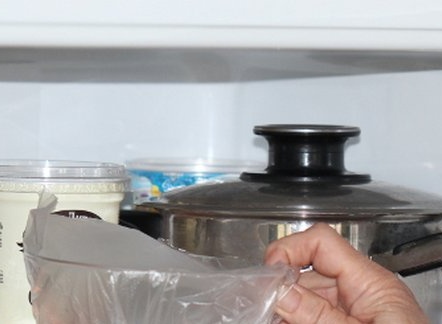
It is possible to expose the swollen seed material to variable temperatures daily for 10-12 days: half a day at 20-24 ° C, half a day at 2-6 ° C.
How to soak pepper seeds before planting on seedlings
Different means are used for soaking, but before using them, it is better to first soak in plain water for 20-40 minutes.
In hydrogen peroxide
If the seeds do not germinate for a long time, they can rot in the ground. Tight-growing seed contains inhibitors - substances that inhibit chemical reactions that interfere with germination. They disappear as a result of oxidation.

1 tbsp. l3% hydrogen peroxide solution should be added to 0.5 l of water. Then spread the seeds on a gauze cloth, fill with this liquid and keep in it for a day, updating the water every 4-5 hours (so that they do not "suffocate"). Rinse and dry followed by treatment.
In potassium permanganate
Potassium permanganate (or just potassium permanganate) is an excellent antiseptic. Potassium permanganate helps get rid of unwanted fungi and bacteria, which allows you to count on the growth of a healthy plant. Apply soaking in potassium permanganate before treatment with growth stimulants.
1-2 g of potassium permanganate should be dissolved in 0.5 cups of water and place the seeds in the resulting pink solution for 20 minutes, no more. Then you need to carefully drain the solution, rinse and dry the seeds to a loose state.
AT Epin
Epin is an industrial growth stimulator that increases the resistance of plants (including pepper) to negative environmental factors (lack of light, deficiency and excess of moisture, hypothermia and overheating, etc.).
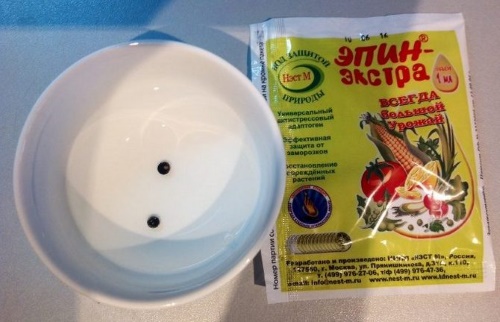
Before use, the drug should be warmed up in hands, then shaken and add 1-2 drops in 100 ml of boiled water, having a temperature of 20-23 ° C. At the same temperature, the seed pepper should be soaked for 18-24 hours. Next, drain and dry.
In gauze
A very simple way that has its own nuances. It is necessary to place gauze fabric folded in 3 layers at the bottom of a shallow light-tight container, put prepared seeds in 1 layer at a distance of several millimeters from each other, moisten and place in a warm place (optimal temperature is 25-28 ° C). It is important to water the gauze pillow in a timely manner, but not to overdo it.
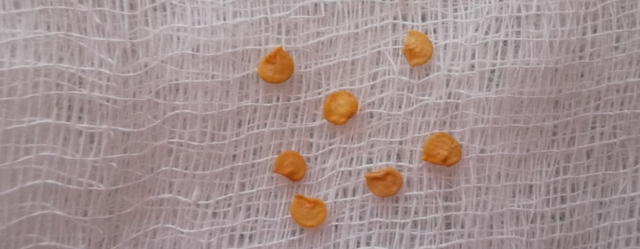
To sprout quickly before planting in peat tablets
In order for pepper shoots to appear faster, it is recommended that after disinfection in a solution of potassium permanganate the seed material is wrapped in tissue, put the bundle in a thermos with 40-degree water and tightly closed for the night. The next day, the contents must be removed, get rid of excess moisture from the seeds with a paper towel and put in a warm place (for example, on a battery) with an air temperature of at least 25 ° C. After a day, the seeds will be ready for the upcoming sowing. Of particular importance is soil moisture. If the soil is dry, the sprouts will die.
Common Growing Questions
Soaking is certainly a useful procedure, but it is not applicable in all cases.If under industrial conditions the seed material has passed the necessary preparation for sowing (as indicated in the manufacturer's recommendations on the packaging), then this must be taken into account. Such a product is absolutely ready for sowing.
Untreated seed (purchased or harvested personally) needs to be soaked, which accelerates germination. Additionally, calibration, disinfection, saturation with microelements, etc. are carried out. When soaking, it is necessary to observe a comfortable temperature and humidity. The use and observance of technological methods will be the key to an excellent harvest.




 Calorie pepper stuffed with meat and rice - BZHU per 100 grams
Calorie pepper stuffed with meat and rice - BZHU per 100 grams Gorky pepper - the best varieties for open ground
Gorky pepper - the best varieties for open ground Hot pepper seeds - the best varieties for open ground and reviews
Hot pepper seeds - the best varieties for open ground and reviews Capsicum tincture for hair - how to use and reviews
Capsicum tincture for hair - how to use and reviews